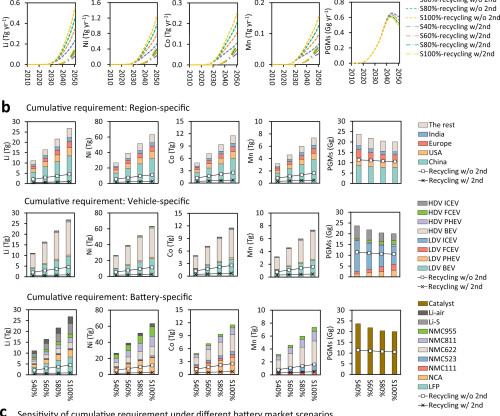Cornell study examines trade-off between critical metals requirement and transportation decarbonization
Green Car Congress
APRIL 17, 2023
“Recycling w/o 2nd” indicates retired batteries that are directly recycled without a second life as energy storage systems (ESSs). Recycling w/2nd” denotes retired batteries reused as ESSs before recycling. Zhang et al. Monotonic growth in global demand for critical metals to 2050 is the most prevalent trend.












Let's personalize your content